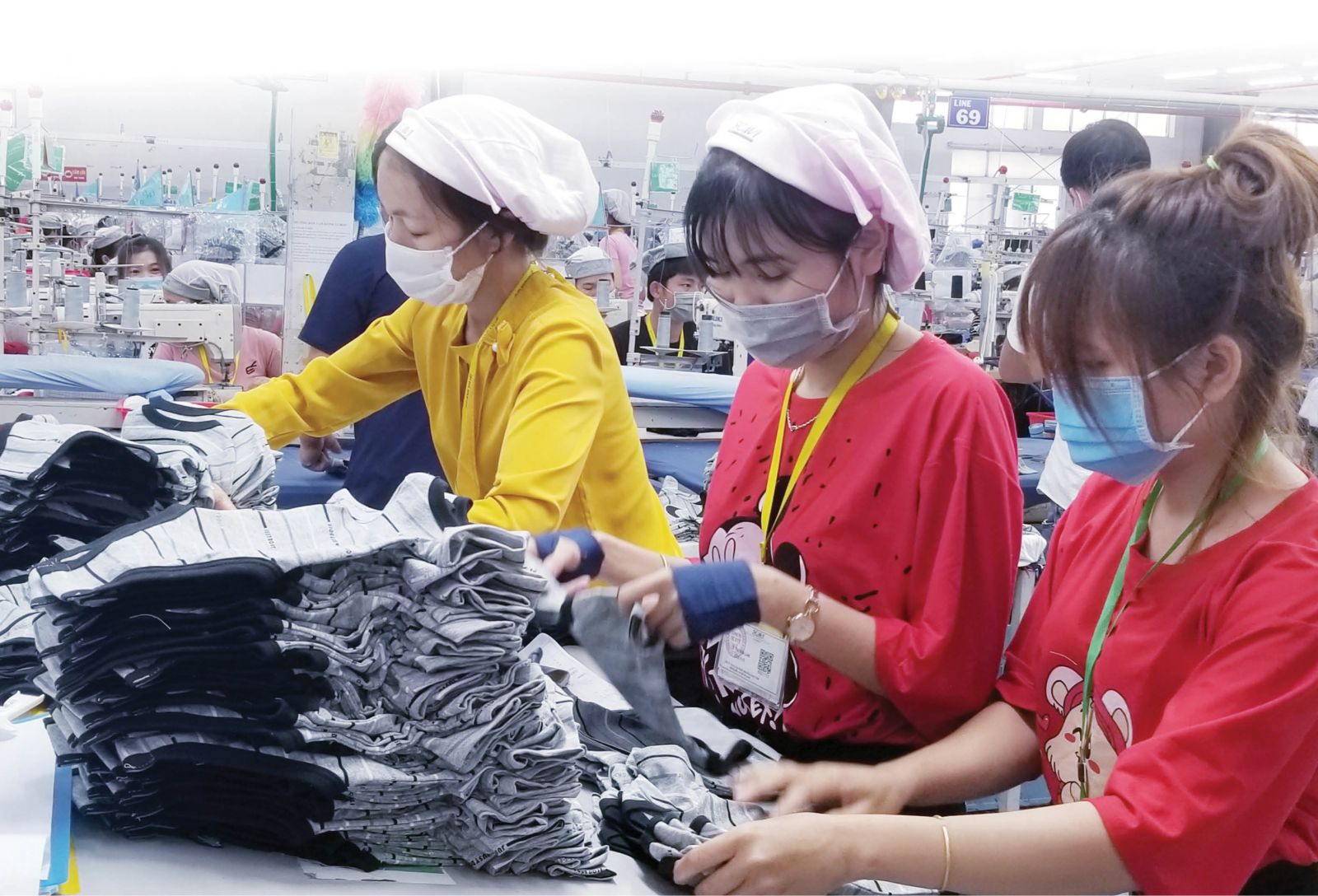
Developing supporting industries for the textile and garment industry contributes to helping businesses stabilize the inputs and increase their supply
Orders doubled
At the beginning of May 2020, many textile and garment enterprises had to face the risk of closing factories due to the impact of the COVID-19 pandemic, leading to a lack of raw materials for production and a temporary suspension of exports. In contrast, since the beginning of this year, textile and garment enterprises have gained many advantages when many nations' economies gradually recover, so orders have continuously increased.
For Thien An Phu Textile and Garment Joint Stock Company, from the beginning of the year, the number of orders has risen dramatically when the demand for fashion products in the US and other countries has gone up sharply. With abundant raw materials, stable production resources and the increased number of orders, during the first four months of this year, the export turnover of enterprises reached more than $4.5 million (increasing 30% compared to the same period in 2020).
To meet the supply for export partners, in early 2021, the company invested 130 billion VND in building a second garment factory at An Hoa industrial cluster (An Hoa ward, Hue city). And now, they are planning to recruit 1,000 employees to put this factory into operation in early 2022.
Mr. Pham Gia Dinh, Chairman of the Board of Directors, General Director of Thien An Phu Textile and Garment Joint Stock Company, stated that, along with concentrating resources on investing in new factories, the company has been continuing to invest in equipment and complete the management system to improve productivity as well as employees' income to strive to reach 9 million VND/person/month within 2021. To stabilize the employees' lives and help them become more attached with the company. The company has asked the People's Committee of Phu Vang district to allot land for building kindergartens and houses for employees.
With four garment factories in Huong Thuy town and Phu Da Industrial Park (Phu Vang), since the beginning of this year, Hue Textile and Garment Joint Stock Company has had many advantages when the orders have been placed to the end of 2021. Among these, the standard orders for fashion clothing products are quite stable, thereby increasing the turnover.
According to Ms. Nguyen Hong Lien, CEO of the company, if we compare the beginning of May 2020 and the present, textile enterprises in general and Hue Textile and Garment, in particular, have significantly grown when the supply is stable, and their partners continuously increase the number of signed orders. Also, the company is considering to expand the market.
However, in the long run, when the COVID-19 pandemic situation is still complicated in some countries worldwide, the supply of raw materials is still a problem when over 70% of those usually used by enterprises are all imported from foreign countries, especially from China. Therefore, developing local raw materials for the textile industry would partly help businesses stabilize the inputs to fulfil orders in all circumstances.
Developing the supporting industry projects
According to data from the Department of Industry and Trade, the export turnover of goods in April 2021 was $87.9 million, bringing the total export turnover in the first four months of 2021 to $ 337.4 million (increasing 51% over the same period and reaching 36% of the annual plan). In particular, enterprises with 100% domestic capital reached $199 million (rising 51%); meanwhile, the companies with foreign investment capital achieved a turnover of $138 million (increasing 51% over the same period in 2020).
Textiles and garments is one of the industries with a substantial rise in export turnover from the beginning of the year. Specifically, the fibers and yarns sector had an increase of 64.8% (at $74.6 million); the garments sector reached 139.7 million USD (increasing 59.7%). Moreover, this field’sexport market has expanded to 39 countries, including Korea, Japan, China, ASEAN, European countries, etc., contributing to diversifying export markets to avoid dependence on certain markets.
According to Mr. Nguyen Van Son, Deputy Head of the Management Board of the Provincial Economic and Industrial Zone, the Board is currently prioritizing attracting investment projects in technical infrastructure and supporting industries for the textile and garment industry. In particular, they are urging infrastructure projects in Phong Dien Industrial Park and wastewater treatment projects; thereby, to form an industrial zone soon to support the textile and garment industry, including textile dyeing and supporting industries to meet the needs of supplying raw materials for enterprises in the area.
To achieve the target of export turnover in 2021 (920 million USD), according to the leader of the Department of Industry and Trade, in the coming time, the Department would continue to provide solutions to promote exports; particularly, they would organise exploits, take advantage of opportunities from the free trade agreements, and seek for methods to develop markets and remove barriers to enter new markets.
At the same time, it is also important to continue to closely monitor the developments of the COVID-19 pandemic in the world to take timely countermeasures. Also, consolidating and expanding export markets, taking full advantage of free trade agreements that come into full effect; and, diversifying export and import markets are also essential tasks.
Story and photo: Thanh Huong